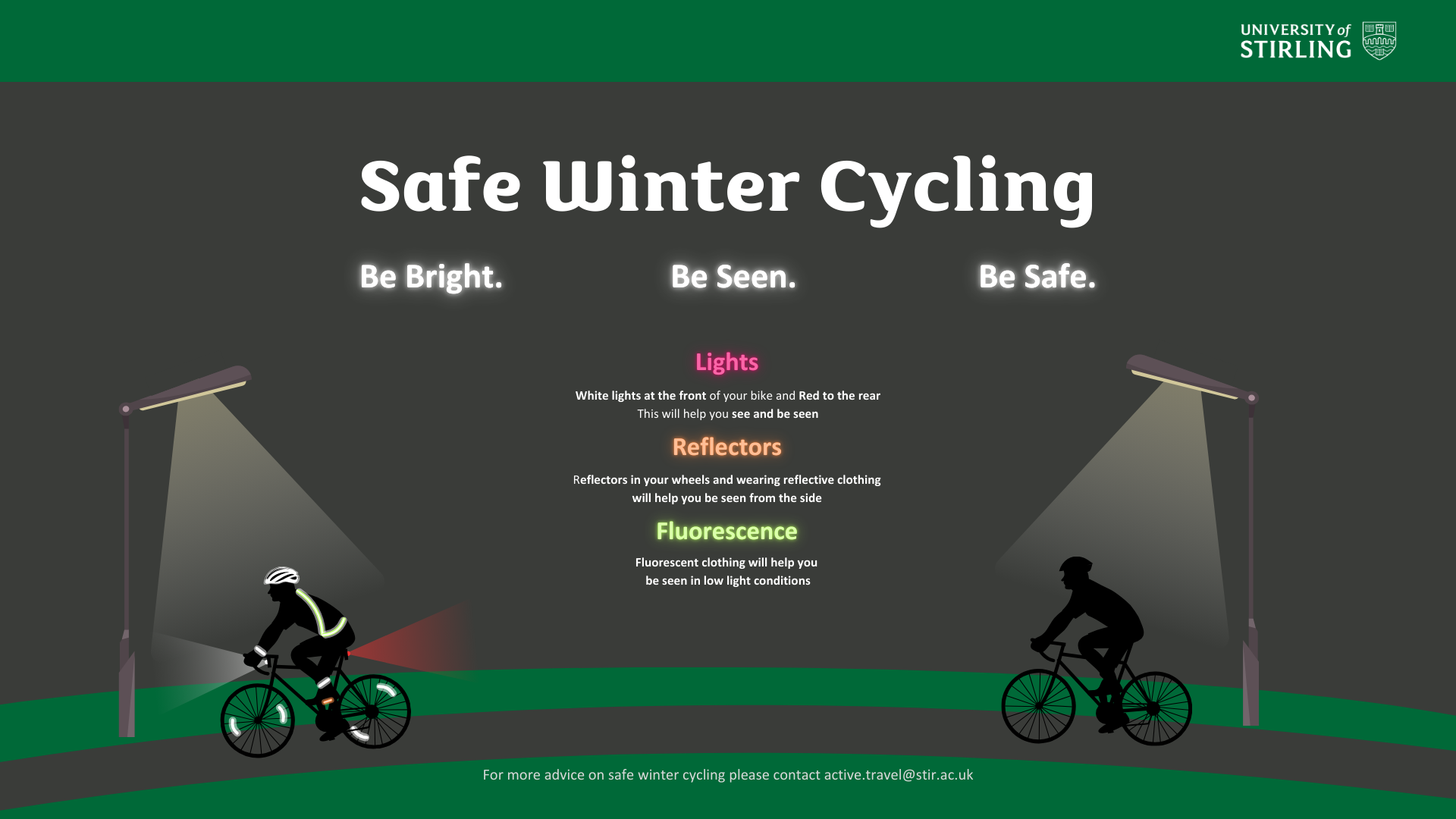University Active Travel Officer Kamern talks us through how to stay safe when cycling in winter, and the benefits of cycling during the colder months.
For many people, cycling is a summer activity. Cycling in the winter can be cold, uncomfortable, and even dangerous. But with the right know-how and a bit of extra kit, it can be a great way to fend off the winter blues.
With its short days, freezing temperatures, and the odd sprinkle of snow, winter can make you feel like you’re trapped indoors. Cycling on your commute can be a great way to make sure you still have some time outside when you’re feeling cooped up.
There are a few simple things you can do to break the mould of the fair-weather cyclist and make cycling in winter as safe and enjoyable as it is in the summer. These steps can be divided into three easy sections: be seen, stay warm, and keep going.
The importance of being seen
By far, the most important factor in avoiding a road accident is being seen. As the dark nights take hold, a good set of lights is vital in keeping you safe. A white light at the front and red at the back of your bike is the ideal setup to ensure drivers can spot you in the dark. Choosing lights with multiple modes and switching to flashing lights will help in heavy traffic.
Another great thing you can do is to use reflectors to your advantage. Reflectors drastically improve your side-on visibility, which can be vital for navigating junctions and crossroads safely.
Stay warm
When it comes to staying warm, there are plenty of cycling-specific products out there that will take a knock at your bank balance. A cheap and effective solution is to get yourself a pair of gloves. Keeping your hands warm is essential to operating your brakes correctly and vital in wet/cold conditions. A waterproof jacket and trousers are a wise investment, but gloves are your best friend for winter cycling.
Making winter cycling more enjoyable
Being seen and staying warm are key to staying safe, but there are a few extra steps you can take to make winter cycling more enjoyable. Mudguards are a great winter upgrade; a full set will do wonders to keep you dry but a simple fender will stop you from having a big stripe of dirt up your back.
If you’re a regular cyclist, getting a pair of winter tyres can make a huge difference to your daily rides by increasing your grip and helping you stop on wet or muddy roads.
Winter also takes a much greater toll on your bike than other seasons do; salt, dirt, and water are not friends with gears and bearings. Cleaning your bike and oiling your chain every other week will help your noble steed survive the worst a Scottish winter can throw at it.
Cycling in winter does require a little more care and effort than in the summer, but it can also be incredibly rewarding. Getting out and experiencing those crisp winter mornings by bike can really help lift your spirits. The mental health benefits of cycling defy the seasons and can really come into their own when we need a little boost in the wintertime.

